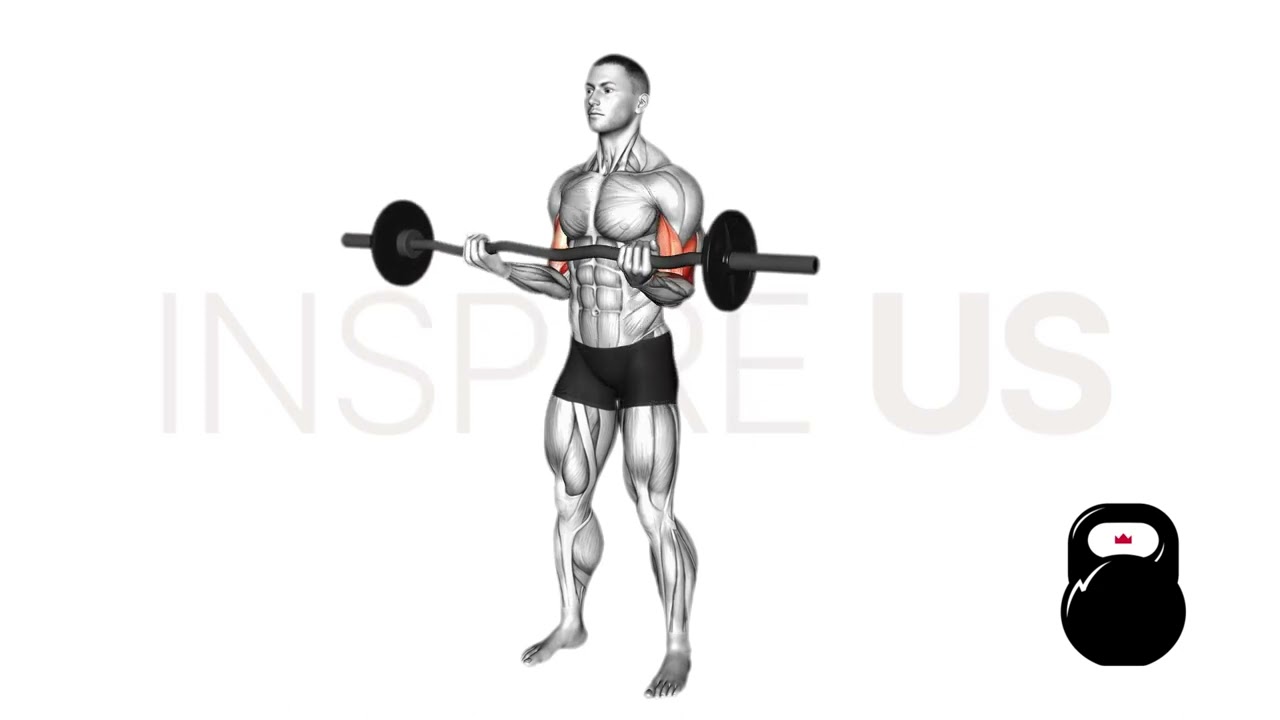EZ Bar Curl: Benefits, Muscles Worked, More
When picking out exercises for building arm size and strength, there are few as mechanically advantageous as the EZ bar curl - a variation of the standard bicep curl with an emphasis on natural movement and reduced injury risk.
In practice, the EZ bar curl is nearly identical to the standard bicep curl, with the sole difference being that the EZ bar curl makes use of a specially shaped barbell with an “S” bend in the middle, allowing for better wrist positioning and weight distribution overall.
For lifters experiencing wrist or forearm pain from standard bicep curls, the EZ bar curl may be their best option - as it is also for lifters seeking greater bicep mass and strength.
What is the EZ Bar Curl?
In more technical terms, the EZ bar curl is a single-joint free weight compound exercise primarily performed so as to add muscle mass to the biceps brachii. It is often preferred over the straight barbell curl due to the tension and risk of injury that a straight barbell can cause.
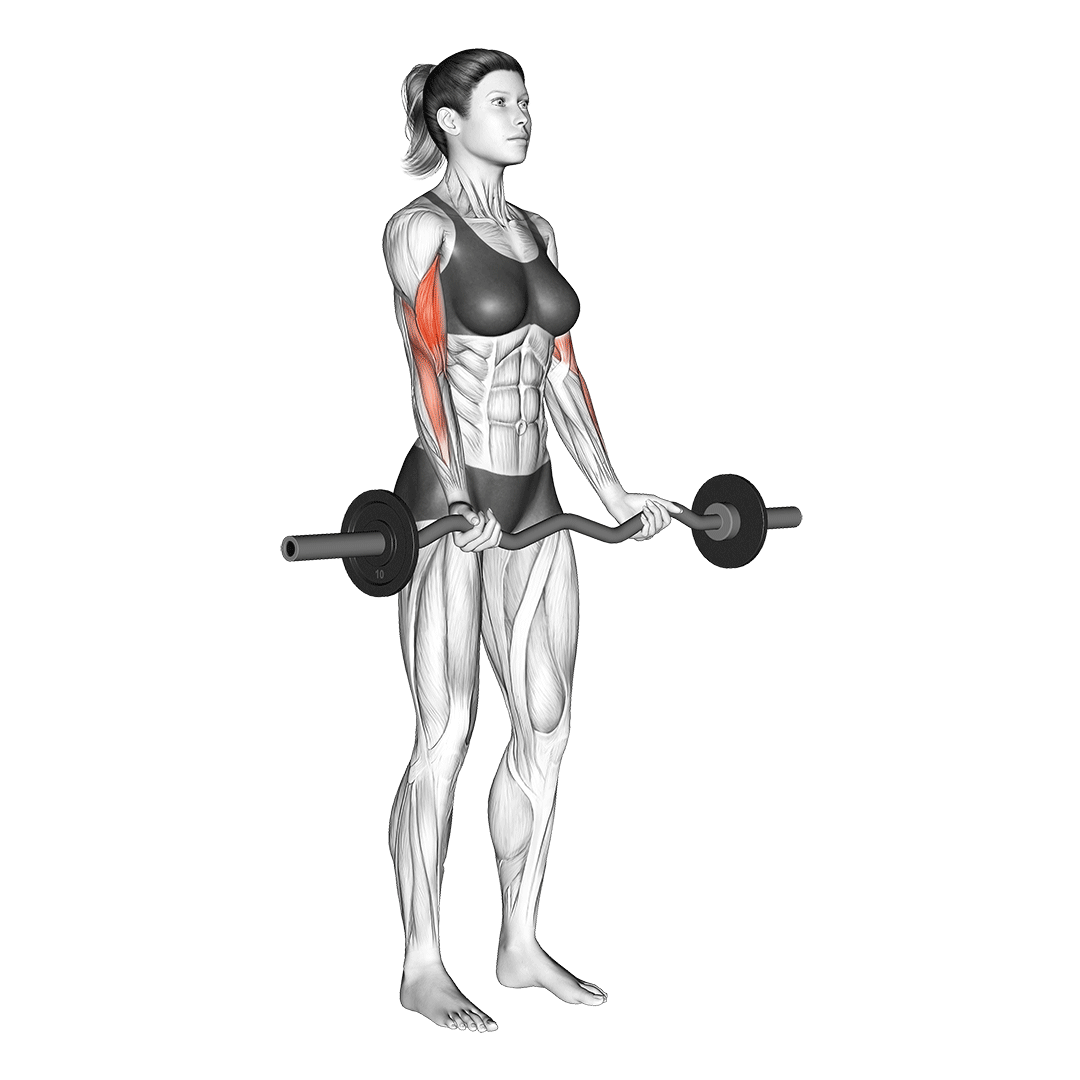
When added to a training program, the EZ bar curl will often be performed for high volume sets with a low amount of weight, thereby maximizing hypertrophy of all recruited muscles and further reducing the risk of injury.
A good starting point for EZ bar bicep curls is to add 2-3 sets of 8-12 repetitions to your workout plan.
How to do a EZ Bar Bicep Curl
To perform a repetition of the EZ bar bicep curl, the lifter will load an EZ bar with a low amount of weight and fit a pair of collars at the ends so as to avoid accidental injury.
Standing erect with both hands gripping the handles in a supinated grip, the lifter will keep their upper arms pressed against the sides of their torso as they bend at the elbows, drawing the barbell upwards.
Once the EZ-bar has reached the same elevation as their shoulders, they will hold the position as they squeeze their biceps.
Having performed the concentric portion of the repetition, they will then perform the eccentric phase by simply allowing the barbell to return to its original position in a slow and controlled manner - thereby completing the repetition.
Muscles Worked by EZ Bar Curls
The EZ bar curl is an isolation exercise - meaning that only one muscle is utilized or “worked” in any significant capacity. This muscle is the biceps brachii, of which is recruited through the elbow flexion biomechanic in both a stabilizing and dynamic capacity.
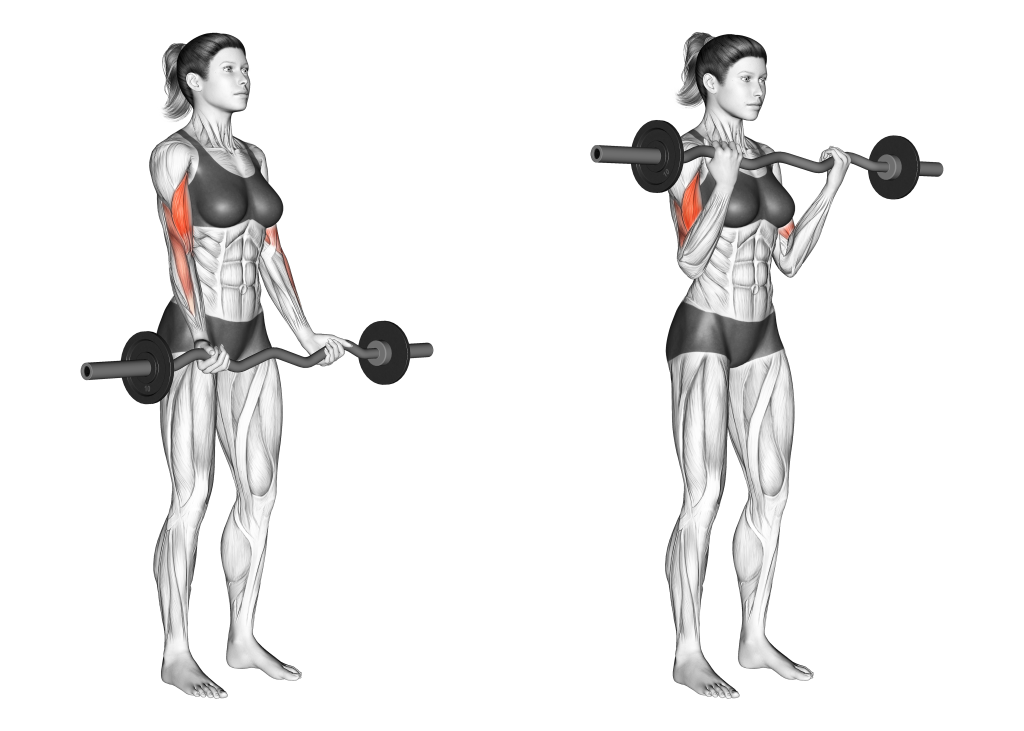
Other muscle groups that are used as stabilizers are the brachialis, the forearms and the brachioradialis - although these are only stimulated to a minor degree at best.
Benefits of the EZ Bar Curl
Though the EZ bar curl shares quite a number of characteristics with other bicep curl variations, there are several key benefits that are solely found with the EZ bar curl, thereby cementing it as a staple in many bodybuilding and athletic training programs.
Excellent Biceps Builder
Even among other bicep curl exercises, the EZ bar curl stands out as quite effective at building up the biceps brachii - a result of its combined benefits alongside the biceps recruitment it is capable of stimulating.
The somewhat larger range of motion of the EZ bar curl (in comparison to other barbell curls) equates to the biceps being targeted for a longer length of time, as well as the fact that a neutral wrist position enables more of the resistance to be translated to the biceps, rather than the forearms.
Large Range of Motion
Though not as large as that of the dumbbell curl, the EZ bar curl features a comparatively longer range of motion than other barbell curl variations due to the position of the wrists when in use, as well as the shape of the bar itself.
This creates a longer time under tension and allows the exerciser to fully target their biceps as a whole, reducing the risk of developing an imbalance or creating a sticking point during other activities.
So long as the elbows do not drift during the exercise, the EZ bar curl is effectively the best barbell curl exercise for full biceps recruitment.
Reinforcement of the Elbow Flexion Biomechanic
Not only does the EZ bar curl target the biceps alone - it will also target the brachialis located next to the biceps, and the brachioradialis atop the forearms.

Each of these muscles contribute to the biomechanic of elbow flexion, meaning that regular performance of the EZ bar curl will reinforce this movement and create a more stable elbow.
Comparatively Natural Movement and Low Risk of Injury
The main advantage of the EZ bar curl is its neutral positioning of the wrist and forearms, of which will not only reduce discomfort and risk of injury but also allow for the lifter to train more effectively.
A more natural movement pattern also means that the EZ bar curl is more novice-friendly than other barbell curl variations, as it is less likely to cause wrist or forearm pain when performed with poor form.
Common Mistakes of the EZ Bar Curl
Though the EZ bar curl is relatively simple in form and unlikely to result in injury, there are nonetheless still several mistakes lifters make that reduce the effectiveness of the exercise - or even negate its safety benefits.
Jerking or Dropping the Bar
Whether by utilizing the shoulders and torso to move the bar upwards or failing to control its descent; the usage of any sort of excessive momentum during the EZ bar curl will reduce the time under tension placed on the biceps, thereby reducing their development as well.
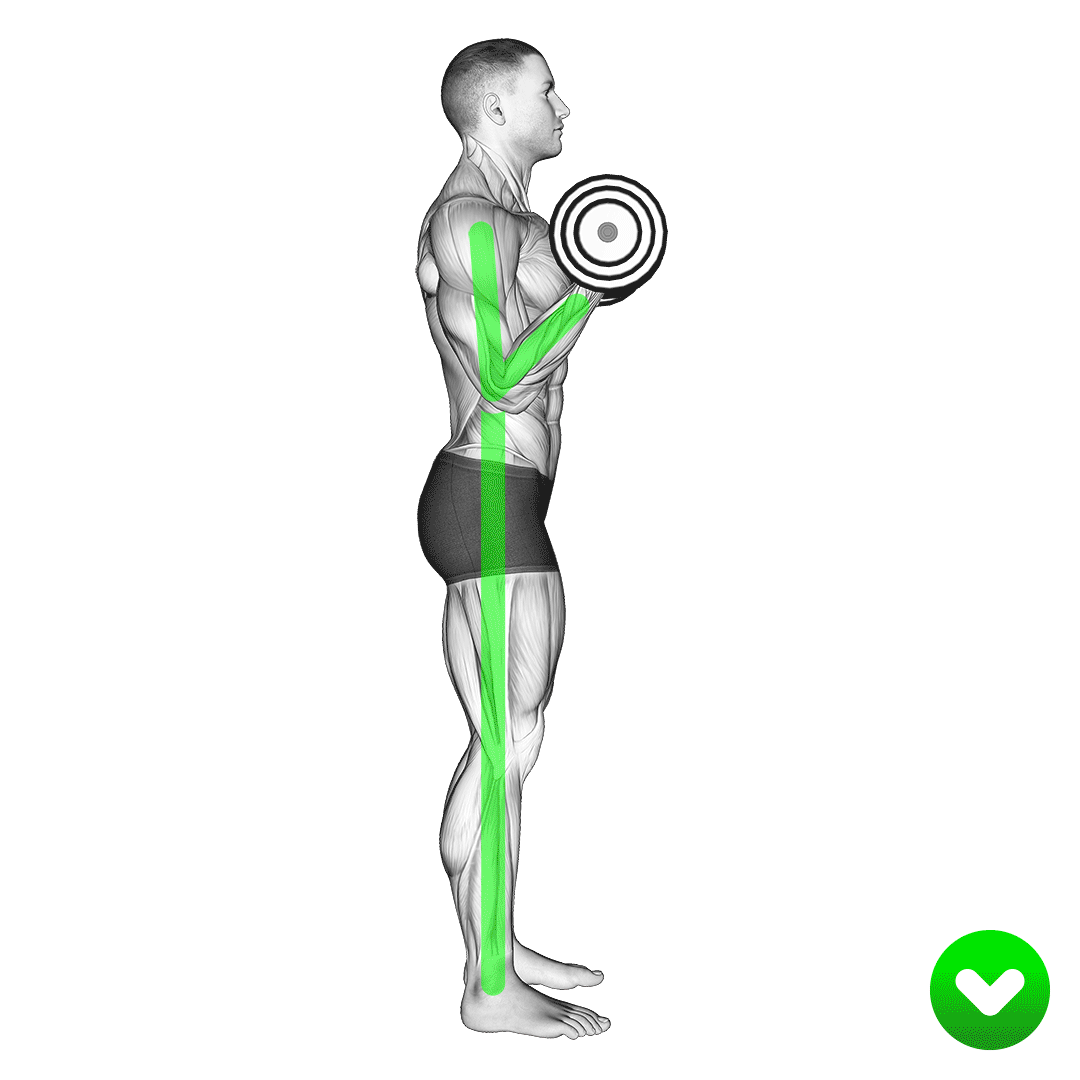
Furthermore, the risk of bicep tears or shoulder dislocations is also increased when failing to control the momentum of the bar - even with the relative safety of the EZ barbell.
Insufficient Range of Motion
Though unlikely to result in injury, performing the EZ bar curl with a narrow range of motion can cause the biceps to respond poorly - not only reducing the benefit that may be received from the exercise, but also potentially leading to sticking points and instability in the future.
The EZ bar curl should be performed with a full range of motion, from the bar touching the abdomen to the apex of the repetition at approximately shoulder elevation.
Allowing the Elbow or Upper Arms to Move
Regardless of whether it is an EZ bar curl, dumbbell curl or any other variation of bicep curl - the upper arms must remain relatively stationary throughout the entire repetition, with the elbows moving as little as possible so as to maximize the amount of resistance being placed on the biceps.
Allowing the elbows or upper arm to move or “float” excessively can greatly reduce the effectiveness of the EZ bar curl, and cause the muscles of the shoulders to bear the weight more than the biceps themselves.
Using Too Much Weight
The EZ bar curl is mechanically identical to nearly every other bicep curl variation, and as such should be loaded in a similar manner.
Performing the exercise with an excessive amount of weight can not only lead to a breakdown in form, but also increase the risk of injury - as well as hamper the total volume placed on the biceps, of which respond far better to high volume, rather than high resistance.
EZ Bar Curl Variations
For lifters wishing to improve the specificity of their biceps training, or those that find the EZ bar curl uncomfortable; several variations of the exercise may improve upon the benefits already present in the conventional EZ bar curl, meeting any sort of goals that the lifter may have.
1. EZ Bar Preacher Curls
If even greater biceps brachii recruitment is needed, lifters may substitute the conventional EZ bar curl with EZ bar preacher curls - a variation that is mechanically similar to the former exercise, but performed with the use of a preacher bench so as to maximize time under tension and muscular recruitment overall.

2. EZ Bar Cheat Curls
Cheat curls may also be performed with an EZ bar - thereby reducing the somewhat large risk of injury that the controversial curl variation presents, while simultaneously allowing for a greater hold to be kept on the bar, improving control over the weight and allowing for a better swing to occur.
Keep in mind that cheat curls of any kind are a complex and advanced exercise, and are better avoided by novice lifters or those with a history of shoulder or bicep injuries.
3. EZ Bar Reverse Curls
For greater forearm muscle recruitment, some lifters may prefer to switch out the conventional EZ bar curl with the EZ bar reverse curl - a minor variation that has the lifter grip the bar in a pronated grip, thereby placing resistance on not only the biceps, but also the brachialis and the various muscles of the forearms.
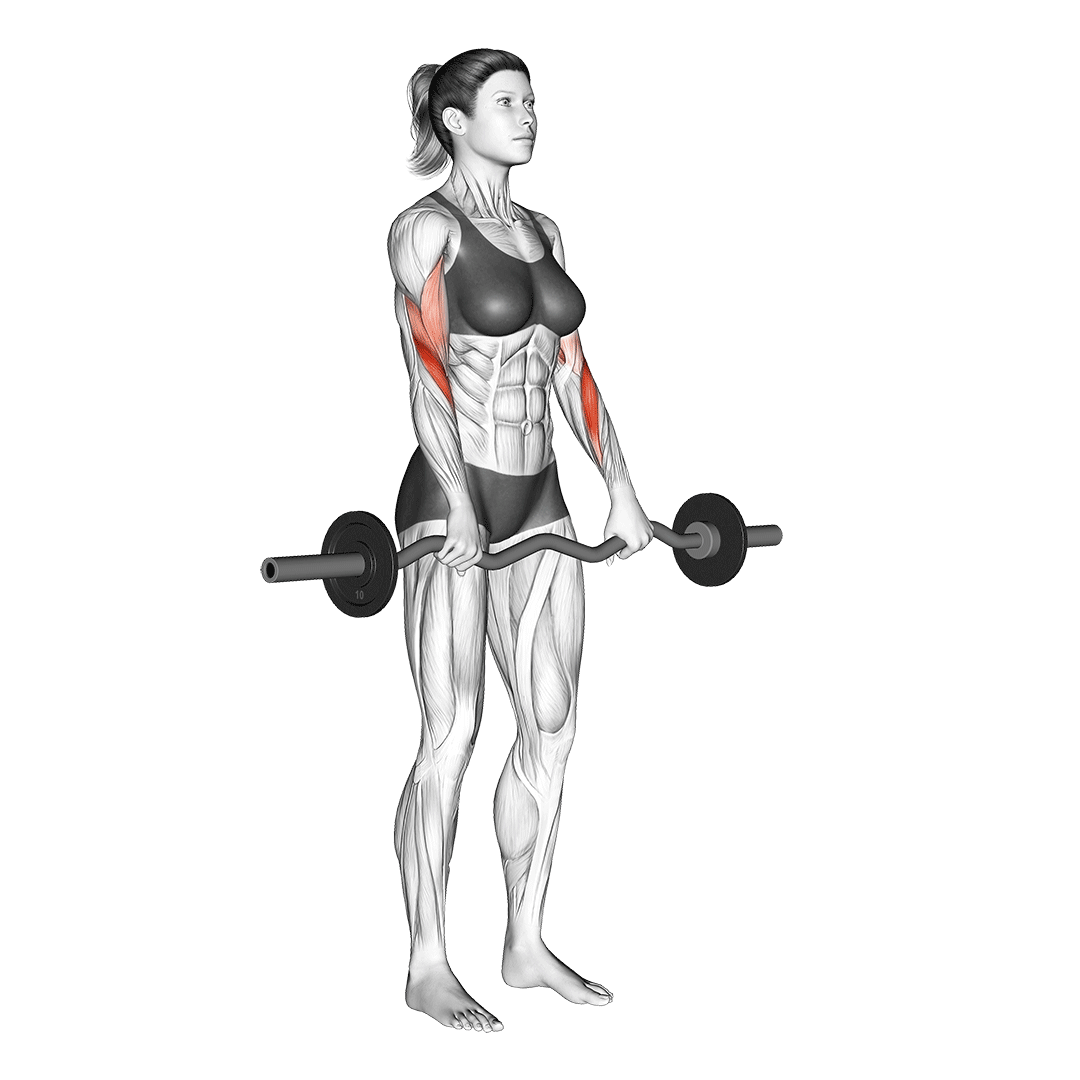
Unlike the standard EZ bar curl, the reverse curl variation will have the lifter place their hands at the top of the bar’s handle bends, negating the wrist protection that the bar is known for.
If performing this exercise, it is important to ensure that the wrists and forearms remain neutral throughout the movement.
Frequently Asked Questions (FAQ)
Is the EZ Bar Better for Curls?
In certain respects, curls performed with an EZ bar are better than those performed with other types of equipment.
The reduced risk of injury and greater range of motion on account of the EZ bar’s shape creates a more natural movement that can allow for greater quality repetitions to be performed, especially in comparison to straight barbell curls.
Is the EZ Bar Curl Good for Biceps?
Yes - the EZ bar curl is a highly effective biceps training movement, especially if the lifter wishes to focus on slow and high-quality repetitions with a low amount of weight.
Not only do EZ bar curls allow for a safer and more comfortable curl, but they also allow for a greater range of motion than other barbell curls, as well as greater reinforcement of the elbow flexion biomechanic as less stress is placed on the forearms and wrists.
What is a Super EZ Curl Bar?
A “Super” EZ curl bar is simply an exaggerated form of the standard EZ curl bar, often featuring a far more dramatic bend at the center of the bar so as to allow for even greater compatibility with supinated exercises like bicep curls.
In Conclusion
Remember that - before diving into this rather effective exercise - it is important to master the relevant form cues, and to program it appropriately.
Start with 2-3 sets of 8-12 repetitions with as little weight as possible before adding a total working weight to the bar.
If you are still unsure of how to go about performing the exercise, seeking out the advice of an athletic coach should be more than enough to help master the movement.
References
1. Marcolin G, Panizzolo FA, Petrone N, Moro T, Grigoletto D, Piccolo D, Paoli A. Differences in electromyographic activity of biceps brachii and brachioradialis while performing three variants of curl. PeerJ. 2018 Jul 13;6:e5165. doi: 10.7717/peerj.5165. PMID: 30013836; PMCID: PMC6047503.
2. Barakat C, Barroso R, Alvarez M, Rauch J, Miller N, Bou-Sliman A, De Souza EO. The Effects of Varying Glenohumeral Joint Angle on Acute Volume Load, Muscle Activation, Swelling, and Echo-Intensity on the Biceps Brachii in Resistance-Trained Individuals. Sports (Basel). 2019 Sep 4;7(9):204. doi: 10.3390/sports7090204. PMID: 31487841; PMCID: PMC6783981.

